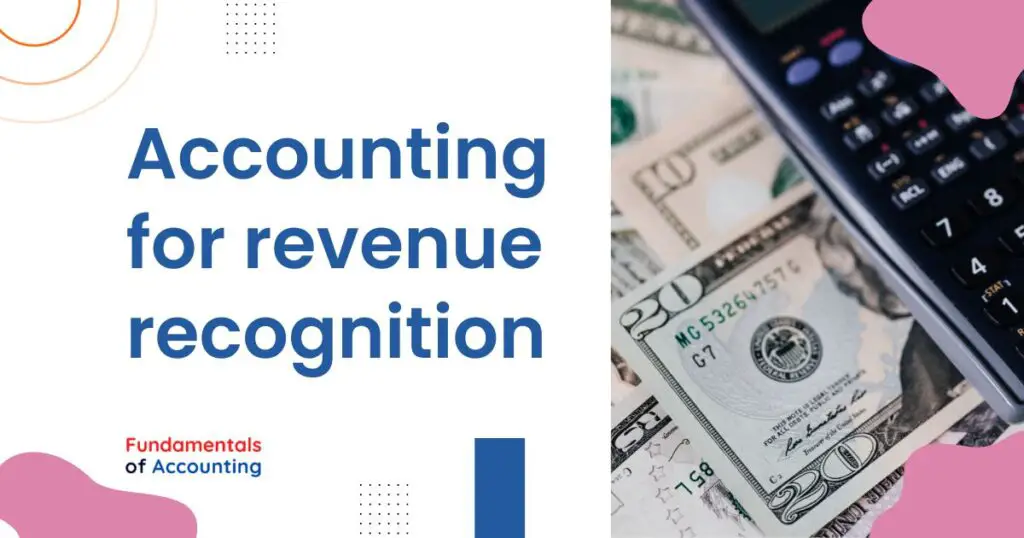IFRS Accounting for Revenue Recognition and Long-Term Contracts
Revenue recognition is a crucial aspect of financial reporting, as it provides stakeholders with insights into a company’s financial performance.
To ensure transparency and comparability, companies need to comply with globally recognized accounting standards, such as the International Financial Reporting Standards (IFRS) and Generally Accepted Accounting Principles (GAAP).
In this blog post, we will discuss the similarities and contrasts between revenue recognition guidelines under IFRS and GAAP.
What is Revenue Recognition?
Revenue recognition refers to the process of identifying when and how a company should record revenue from its customers in its financial statements. Proper revenue recognition allows stakeholders to assess a company’s financial position and performance accurately.
Transparent and accurate revenue recognition is crucial for both internal and external users of financial statements. It provides vital information to investors, creditors, and other stakeholders to evaluate a company’s profitability, solvency, and future prospects. Therefore, adhering to global accounting standards is essential.
Revenue Recognition as Per IFRS
IFRS is a set of accounting standards developed and maintained by the International Accounting Standards Board (IASB). IFRS 15, Revenue from Contracts with Customers, is the key standard for accounting for revenue recognition under International Financial Reporting Standards.
The IFRS 15 standard provides a principle-based approach to revenue recognition. It focuses on the transfer of control over goods or services to customers. Under IFRS, revenue recognition occurs when there is a high probability of the economic benefits associated with the transaction flowing to the entity, and the amount of revenue can be measured reliably.
For example, if a company sells a product, revenue is recognized when control of the product transfers to the customer. On the other hand, if a company provides a service over time, revenue is recognized proportionately as the service is being performed. This approach emphasizes capturing the substance and economics of a transaction rather than just following strict rules.
While IFRS 15 provides a comprehensive framework for revenue recognition, its application can pose challenges. Certain contracts may require management judgments and estimates regarding variable consideration, performance obligations, and costs to be capitalized. This flexibility introduces complexity and increases the risk of inconsistent interpretation.

Percentage of Completion Method for Long-Term Contracts
Under IFRS, companies should use the percentage of completion method to account for long-term contracts. If costs and revenues are difficult to estimate, companies should only recognise revenue to the extent of the costs incurred. This means taking a cost-recovery approach.
When working with the International Financial Reporting Standards, the percentage of completion method and the cost recovery method of accounting for long-term contracts are recognised.
With the percentage of completion method, companies recognise GP and revenues each period based simply on the construction progress or, in other words, the project’s completion percentage. Construction costs are accumulated, and gross profit earned to date is added to an inventory account. It also accumulates progress billings in a contra-inventory account. This method is the same for IFRS and GAAP.
When working with the cost recovery method, contra revenue is sometimes recognised only to the extent of the costs incurred that are expected to be recoverable. Profit is recognised once all costs are recognised. The construction costs, in this case, are accumulated in the Construction in Progress inventory account and progress billings are accumulated in the Billings on Construction in the Progress contra inventory account.
The percentage of completion method of accounting for long-term contracts is used because the buyer and seller both have enforceable rights under most contracts. The buyer’s right is that he can legally require specific performance on the contract. And the seller legally has the right to require progress payments that provide evidence of his ownership. This result is that a continuous sale occurs as the work progresses.
Companies MUST use the percentage of completion method of accounting when the estimates of progress towards completion, revenues, and costs can be reliably estimated and ALL of the following conditions exist:
Companies should use the cost recovery method when ONE of the following conditions applies:
- When the conditions for using the percentage of completion cannot be met,
- And when there are inherent hazards in the contract beyond normal business risks.
Conclusion
In conclusion, revenue recognition plays a fundamental role in financial reporting, allowing stakeholders to evaluate a company’s performance. Adhering to globally recognized accounting standards, such as IFRS and GAAP, is crucial for transparent and accurate revenue recognition. While there are similarities between IFRS and GAAP in revenue recognition principles, thoughtful consideration of their differences is necessary.
